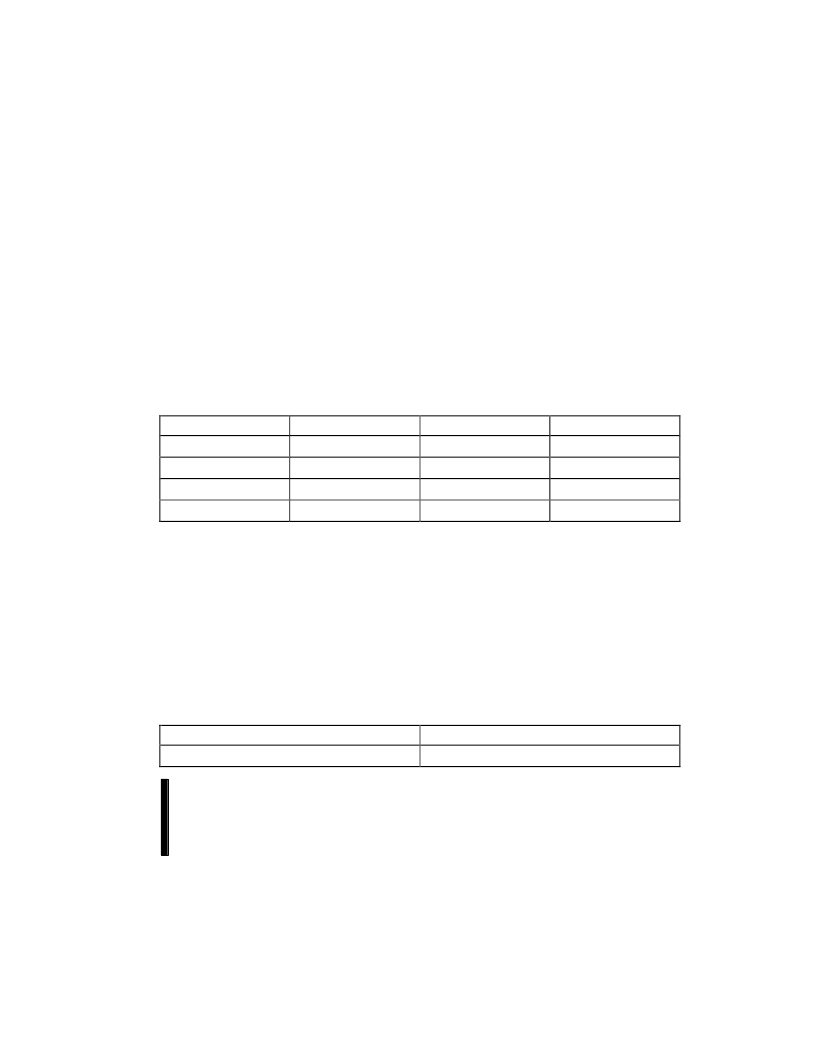- 您現(xiàn)在的位置:買賣IC網(wǎng) > PDF目錄366235 > 62371AB (Intel Corp.) multi-function PCI device(多功能PCI設(shè)備) PDF資料下載
參數(shù)資料
| 型號(hào): | 62371AB |
| 廠商: | Intel Corp. |
| 英文描述: | multi-function PCI device(多功能PCI設(shè)備) |
| 中文描述: | 多功能PCI設(shè)備(多功能的PCI設(shè)備) |
| 文件頁數(shù): | 167/284頁 |
| 文件大?。?/td> | 1042K |
| 代理商: | 62371AB |
第1頁第2頁第3頁第4頁第5頁第6頁第7頁第8頁第9頁第10頁第11頁第12頁第13頁第14頁第15頁第16頁第17頁第18頁第19頁第20頁第21頁第22頁第23頁第24頁第25頁第26頁第27頁第28頁第29頁第30頁第31頁第32頁第33頁第34頁第35頁第36頁第37頁第38頁第39頁第40頁第41頁第42頁第43頁第44頁第45頁第46頁第47頁第48頁第49頁第50頁第51頁第52頁第53頁第54頁第55頁第56頁第57頁第58頁第59頁第60頁第61頁第62頁第63頁第64頁第65頁第66頁第67頁第68頁第69頁第70頁第71頁第72頁第73頁第74頁第75頁第76頁第77頁第78頁第79頁第80頁第81頁第82頁第83頁第84頁第85頁第86頁第87頁第88頁第89頁第90頁第91頁第92頁第93頁第94頁第95頁第96頁第97頁第98頁第99頁第100頁第101頁第102頁第103頁第104頁第105頁第106頁第107頁第108頁第109頁第110頁第111頁第112頁第113頁第114頁第115頁第116頁第117頁第118頁第119頁第120頁第121頁第122頁第123頁第124頁第125頁第126頁第127頁第128頁第129頁第130頁第131頁第132頁第133頁第134頁第135頁第136頁第137頁第138頁第139頁第140頁第141頁第142頁第143頁第144頁第145頁第146頁第147頁第148頁第149頁第150頁第151頁第152頁第153頁第154頁第155頁第156頁第157頁第158頁第159頁第160頁第161頁第162頁第163頁第164頁第165頁第166頁當(dāng)前第167頁第168頁第169頁第170頁第171頁第172頁第173頁第174頁第175頁第176頁第177頁第178頁第179頁第180頁第181頁第182頁第183頁第184頁第185頁第186頁第187頁第188頁第189頁第190頁第191頁第192頁第193頁第194頁第195頁第196頁第197頁第198頁第199頁第200頁第201頁第202頁第203頁第204頁第205頁第206頁第207頁第208頁第209頁第210頁第211頁第212頁第213頁第214頁第215頁第216頁第217頁第218頁第219頁第220頁第221頁第222頁第223頁第224頁第225頁第226頁第227頁第228頁第229頁第230頁第231頁第232頁第233頁第234頁第235頁第236頁第237頁第238頁第239頁第240頁第241頁第242頁第243頁第244頁第245頁第246頁第247頁第248頁第249頁第250頁第251頁第252頁第253頁第254頁第255頁第256頁第257頁第258頁第259頁第260頁第261頁第262頁第263頁第264頁第265頁第266頁第267頁第268頁第269頁第270頁第271頁第272頁第273頁第274頁第275頁第276頁第277頁第278頁第279頁第280頁第281頁第282頁第283頁第284頁

E
The three cases above require the following functionality in the PCI DMA expansion device:
82371AB (PIIX4)
167
4/9/97 2:23 PM PIIX4aDS
INTEL CONFIDENTIAL
(until publication date)
PRELIMINARY
1.
2.
3.
Drive REQ# inactive for one clock to signal new request information.
Drive REQ# inactive for two clocks to signal that a request that had been granted the bus has gone inactive.
The REQ# and GNT# state machines must run independently and concurrently (i.e., a GNT# could be
received while in the middle of sending a serial REQ# or a GNT# could be active while REQ# is inactive).
PCI DMA Expansion Cycles
PIIX4’s support of the Mobile PC/PCI DMA Protocol currently consists of
four types of cycles:
Memory to I/O, I/O
to Memory, Verify, and ISA Master cycles.
ISA Masters are supported through the use of a DMA channel that
has been programmed for cascade mode.
Single Transfer Mode is implicitly supported as the case where the
DMA controller negates the DACK#/GNT# signal after one transfer has been completed
or the DMA controller
toggles DACK# after every transfer.
Single transfer mode does not require the requesting device to negate
DREQ# after a cycle has completed. Therefore, a PCI DMA agent that uses this mode must also sample the
GNT# signal and remove DACK# to the I/O DMA device when GNT# goes inactive.
The DMA controller does a two cycle transfer (a load followed by a store) as opposed to the ISA “fly-by” cycle for
PC/PCI DMA agents. The memory portion of the cycle generates a PCI memory read or memory write bus
cycle, its address representing the selected memory.
The I/O portion of the DMA cycle generates a PCI I/O cycle to one of four I/O addresses (Table 22). Note that
these cycles must be qualified by an active GNT# signal to the requesting device.
Table 22. DMA Cycle vs. I/O Address
DMA Cycle Type
DMA I/O Address
TC (A2)
PCI Cycle Type
Normal
00h
0
I/O Read/Write
Normal TC
04h
1
I/O Read/Write
Verify
0C0h
0
I/O Read
Verify TC
0C4h
1
I/O Read
For PCI DMA cycles, the I/O address indicates the type of DMA cycle taking place (whether its a normal or a
verify cycle, and if this is the last transfer of the buffer). Note that the A2 address line is encoded as the terminal
count signal for PCI cycles; A2 asserted during a PCI I/O cycle indicates the last transfer in the current DMA
buffer. To ensure that non Mobile PC/PCI compliant PCI I/O devices do not confuse Mobile PC/PCI DMA cycles
for normal I/O cycles, the addresses used by the PCI DMA cycles correspond to the slave addresses of the
Mobile PC/PCI DMA controller.
All PCI DMA I/O ports must be DWord aligned and can be either byte or word in size. This means that any PCI
DMA I/O port must always be connected to the lower data lines of the PCI data bus (Table 23).
The byte enables also reflect this during the I/O portion of a PCI DMA cycle. Table 24 illustrates the byte enable
state for any given PCI DMA cycle:
Table 23. PCI Data Bus vs. DMA I/O port size
PCI DMA I/O Port Size
PCI Data Bus Connection
Byte
AD[7:0]
相關(guān)PDF資料 |
PDF描述 |
|---|---|
| 6259 | CONNECTOR ACCESSORY |
| 6273 | 8-BIT LATCHED DMOS POWER DRIVER |
| 6275 | 8-BIT SERIAL-INPUT, CONSTANTCURRENT LATCHED LED DRIVER |
| 6276 | 16-BIT SERIAL-INPUT, CONSTANTCURRENT LATCHED LED DRIVER |
| 6277 | 8-BIT SERIAL-INPUT, CONSTANTCURRENT LATCHED LED DRIVER |
相關(guān)代理商/技術(shù)參數(shù) |
參數(shù)描述 |
|---|---|
| 6237201015 | 制造商:Varta 功能描述:2/3 A Series Lithium 3 V 1350 mAh With Sleeve and Wire Cylindrical Battery |
| 6237201301 | 制造商:Varta 功能描述:BATTERY LITHIUM 2/3AA PCB 3V 制造商:Varta 功能描述:BATTERY, LITHIUM, 2/3AA, PCB, 3V 制造商:Varta 功能描述:2/3 AA Lithium 3 V 1350 mAh PCB Cylindrical Battery |
| 62372091322 | 制造商:3M Electronic Products Division 功能描述:HOT MELT ADHESIVELM Q 5/8"X8" 制造商:3M Electronic Products Division 功能描述:SCOTCH-WELD HOT MELT/LOW MELT 5KG 3762M |
| 62372093302 | 制造商:3M Electronic Products Division 功能描述:HOT MELT ADHESIVE |
| 62372098301 | 制造商:3M Electronic Products Division 功能描述:HOT MELT ADHESIVE |
發(fā)布緊急采購,3分鐘左右您將得到回復(fù)。